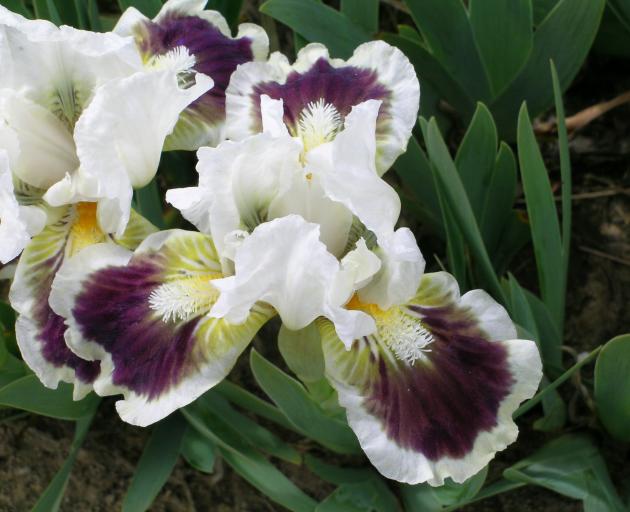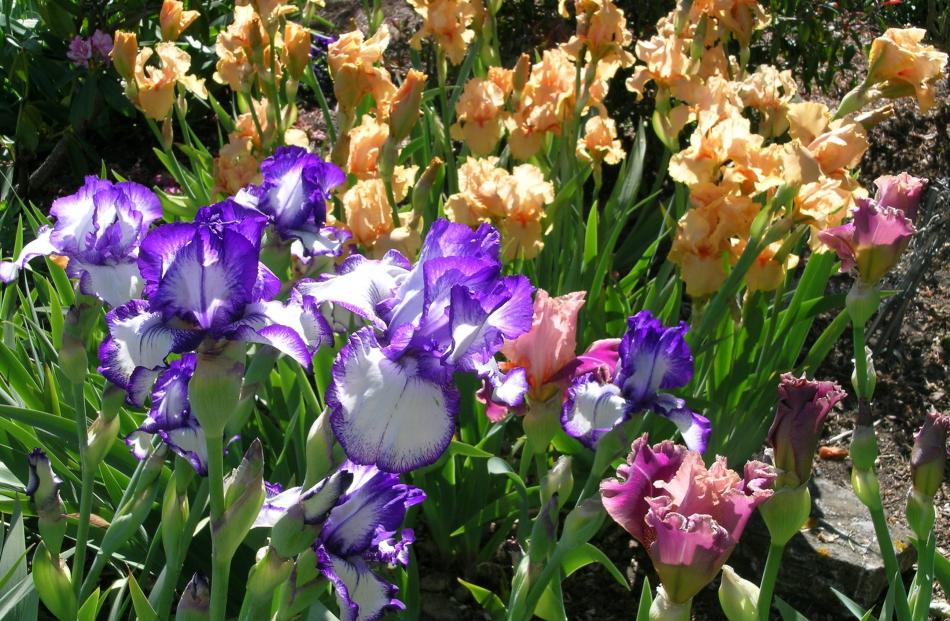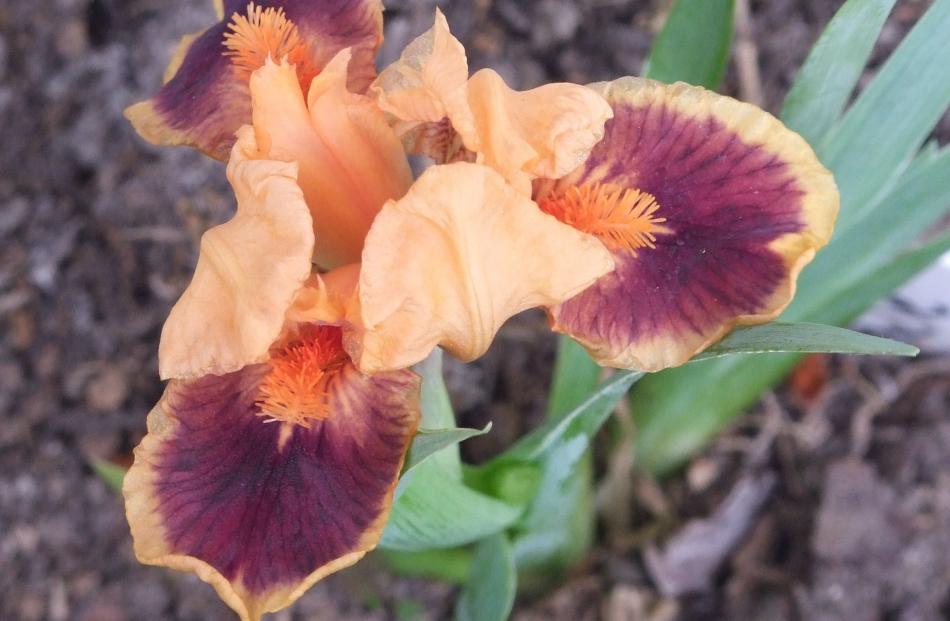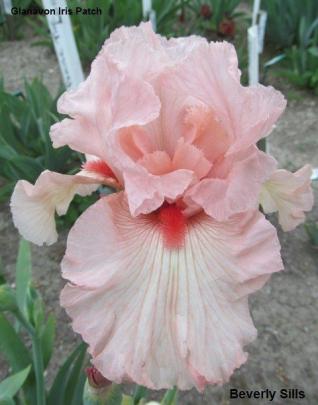Gillian Vine looks at a plant named for a rainbow lady.
Iris, the Greek goddess of the rainbow, was supposedly always in perfect health and immune to ageing. She was fleet of foot, able to cross quickly the rainbow bridge between earth and heaven. That sounds good, although her role as handmaiden to the gods doesn’t resonate with me.
The flowers named for Iris come in almost every imaginable colour, are generally healthy and last for many years if given the right conditions. What’s not to like?
Apart from the weedy stinking iris (I. foedissima), I must say I’ve never met an iris I didn’t like. Even the unwanted yellow flag (I. pseudacorus) that grows in boggy ground has its appeal.
My favourites, though, are the rhizomous bearded I. germanica group, which flower in October and November. The smallest are the first to bloom, then the intermediates and finally the tall bearded, whose flower stems can reach 1m or more.
Their elegant blossoms and wide colour range appeal, as does their toughness.

Usually, the falls on bearded irises are darker than the standards. If the falls are lighter, the plant is termed a reverse. When the standards and falls are the same colour, the flower is referred to as a self; bicoloured means there are two colours; while plicata describes flowers with white falls contrasted with dark lines or "stitching" on the margins and/or dark veins.
There are six main groups, classified by the height of the flower stems. The smallest are the miniature dwarf varieties (MDB) at less than 20cm tall, followed by standard dwarf (SDB); intermediate (IB); miniature tall bearded (MTB); border bearded; and the largest, tall bearded (TB) of more than 70cm.
Although irises come in almost every shade except true red, pinks are not as common in the beardeds as purple, blue or gold. The first commercial success was TB "Pink Clover", introduced in the 1950s but it had a violet tinge, so "Vanity" (1974) was probably the first truly pink bearded iris. Its American breeder Ben Hager followed it with "Beverly Sills" (1978). Both remain very popular.
From the intermediate (IB) group comes "Pink Kitten", a lovely little peach-coloured critter bred in California in 1976.
Australian Barry Blyth bred "Kiss Me Quick" (1996), a pink and white variety which grows to 38cm. It’s just one of more than 1000 irises the fourth-generation nurseryman has registered.
Bearded irises love hot summers to bake their rhizomes, so Central Otago gardeners are rightly happy to boast about how well they do there.

They are greedy plants, so give them lots of animal manure and a dressing of lime to maintain a pH of 6.0 to 7.0.
To keep them performing well, divide I. germanica clumps every three or four years. In between-times, using a sharp knife to cut the manky part off the ends of long rhizomes gives them a fresh look.
Divide plants after flowering, cutting rhizomes so only 2cm-3cm remains for each fan of leaves.
Discard any bits of rhizome without leaves or leaf buds, trim the leaves to about 5cm above the rhizome, then return to well-fertilised ground in the sunniest spot you can find. Make sure the site is well-drained, as wet feet causes plants to rot, not a good look when a new plant can cost $30.
If you give them what they want, irises will be a long-lived, colourful addition to your garden, worthy of the goddess after whom they are named.















